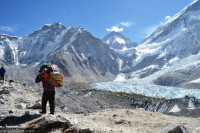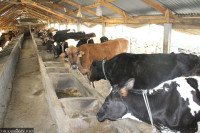Money
Chinese dry garlic prices more than double on loss of supplies
Outbreak of coronavirus in China has brought cross-border trade from the northern neighbour to a complete halt.
Krishana Prasain
The coronavirus outbreak in China has sent dry Chinese garlic prices shooting through the roof in the Nepali retail market, with supplies from the northern neighbour coming to a complete halt.
Theretail prices of dry Chinese garlic have more than doubled within two weeks, according to traders.
Traders say the dramatic rise in prices was triggered by a halt in supply from China due to the coronavirus outbreak, but consumer rights activists are blaming traders for using the epidemic as an excuse to jack up the prices.
The China virus outbreak, which has claimed 259 lives and sickened 11,791 people, has spread to as many as 20 countries, affecting the global economy.
According to Bloomberg, the global economy, which is interconnected, is feeling the heat of the new strain of coronavirus. The potential loss in growth in the coming days could be $160 billion, it said.
The ban could also significantly impact the country’s economy as restaurants, hotels, and transportation and trade sectors could be hit significantly in February and March and slacken through the rest of the year even if the virus is controlled, industry insiders said.
The retail price list of the Kalimati Fruits and Vegetables Market Development Board shows that dry Chinese garlic was traded at Rs245 per kilo until January 20. On Thursday, it reached a record Rs645 per kg.
Binaya Shrestha, deputy director at the board, said the supplies began to fall with the start of Chinese New Year and came to a complete halt after the only operating trading point from China, in Rasuwagadhi, closed due to coronavirus fears.
But Prem Lal Maharjan, president of the National Consumer Forum, rubbished traders’ claims.
“They have given a false reason. The Nepal-China border point is closed every year during the Chinese New Year celebration,” said Maharjan. “Besides, traders supply essentials like dry garlic for a month or more in advance to fulfil the domestic demand, before the New Year begins.”
The local garlic production is nominal. The bulbous vegetable is mostly imported from China to fulfil the domestic demand, Maharjan said.
Dry garlic prices may go up further in the local market if the epidemic emanating from China is not controlled. “We cannot predict at what level the price will reach, but the trends are not looking good. The import of fresh spices from India will take some time,” said Shrestha.
“Until then, garlic is likely to be one of the most expensive spices and would be beyond the purchasing capacity of many Nepalis,” he added.
Nokh Bahadur Bashyal, a spokesperson at the Department of Commerce, Supply and Consumer Protection Management, said they have not received complaints about any abnormal price hike.
“We have not received complaints yet to send an inspection team to the market,” said Bashyal.
According to Shrestha, the Kalimati market, the country’s largest vegetable and fruits marketplace, received 91 tonnes of garlic, in January. Due to their bigger size, the dry Chinese garlic is preferred in Nepali kitchens.
The country imported garlic worth Rs160 million in the first six months of the current fiscal year, as per the statistics of the Department of Customs. Annual import amounts to Rs371 million.
Nepal produces 59,500 tonnes of garlic annually.
Garlic yields the highest profit margin compared to other vegetables and cereal crops, according to the Ministry of Agriculture and Livestock Development. It is 70 times more profitable than paddy and 17 times more profitable than potato.
According to government officials, despite such huge profits, there is no commercial farming of garlic in the country. It is used mainly as a flavouring for food and as a health food.




 13.12°C Kathmandu
13.12°C Kathmandu















